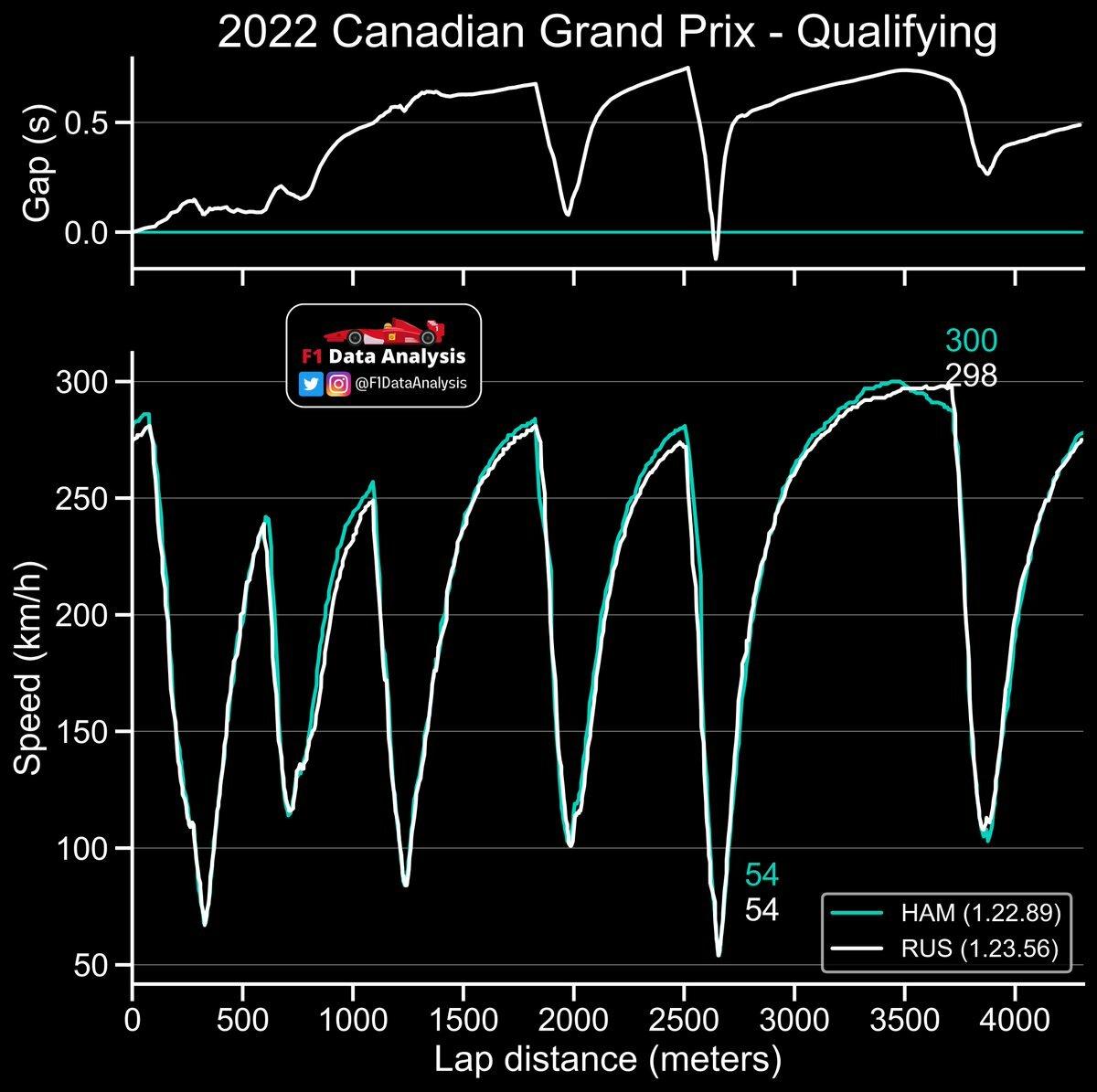Mercedes chose a differentiated setup for the two drivers HAM with a lower-drag wing and RUS with the high-downforce one. The higher downforce of RUS wing can be easily discerned by the higher curvature and angle of attack of both the lower and the upper plane.

This gave RUS the best chance in qualifying, but he took a gamble on slicks which didn't pay off in the end. On the contrary, HAM should have the best setup for the dry race. But how do the different rear wings influence the car's performance? Let's find out with a telemetry analysis!

First, a look at the gap and speed traces. The effect of added drag is clear: the speed grows more slowly, and the gap increases throughout the straights. The faster the car goes, the more significant the drag-induced difference and the higher the longitudinal acceleration difference. Conversely, RUS gains during most braking points, as expected by a car with higher drag and downforce. At the braking start, the vehicle travels at the highest speed. Therefore, aerodynamics makes the most difference.
What is interesting is that, although the drag difference is easily visible from the speed traces, the top speed difference is relatively tiny: this is because in the main straight HAM lifts off before the braking point, probably because braking suddenly from an even higher speed with a low-drag setup would definitely be tricky in wet conditions!
HAM should have the best setup for the race: as the track gets faster, the optimal tradeoff between low drag and high downforce moves towards the former. RUS will probably be a sitting duck on straights.
I hope you enjoyed the analysis; You can support the page (and request custom analysis!) here: https://www.buymeacoffee.com/F1DataAnalysis. Thank you! :)
